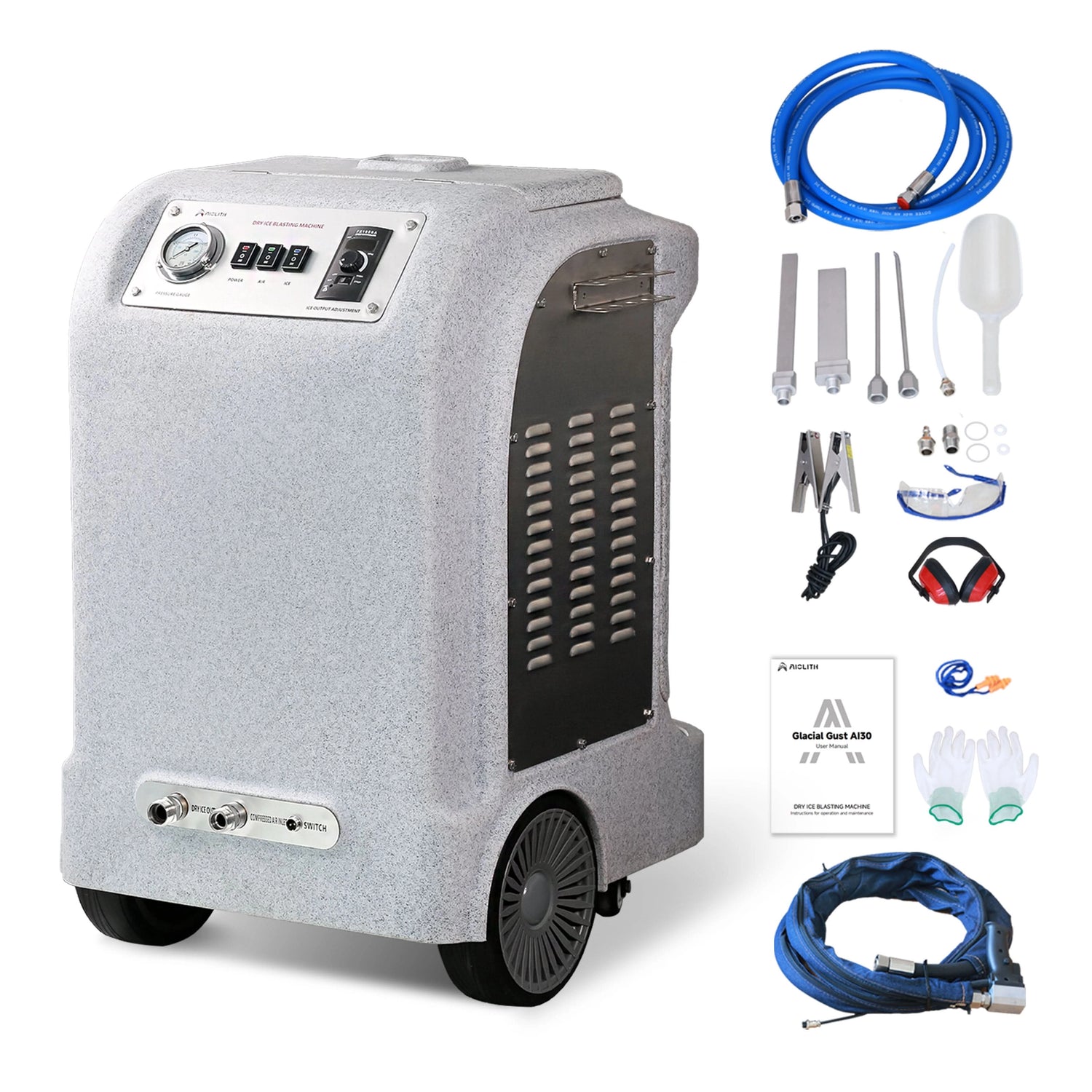What Do Professionals Use to Clean Floors? 9 Proven Tools and Techniques That Solve Cleaning Pain Points for Businesses
Share
Why Professional Floor Cleaning Matters
Clean floors are more than just about appearances. For businesses, dirty or poorly maintained flooring can lead to safety hazards, higher maintenance costs, and negative impressions on clients. According to the U.S. Centers for Disease Control and Prevention (CDC), regular and effective floor cleaning reduces the risk of slips, falls, and the spread of infectious microbes (CDC, 2020).
Professionals know that choosing the right cleaning tool is critical. The debate often centers around mops vs. floor scrubbers vs. advanced mechanized equipment. But what tools actually deliver the best results?
The Core Tools Professionals Use to Clean Floors
| Tool | Strengths | Weaknesses | Best for |
|---|---|---|---|
| Brooms & Dust Mops | Cheap, simple, effective for loose debris | Leaves fine dust behind | Small offices, light-duty cleaning |
| Wet Mops | Familiar, low cost | Labor-intensive, spreads dirt | Homes, small retail shops |
| Vacuum Cleaners | Quick at removing dust and allergens | Cannot remove sticky grime | Offices, hotels, classrooms |
| Steam Cleaners | Sanitizes with heat, chemical-free | Limited coverage, not suitable for all floors | Healthcare, kitchens, restrooms |
| Buffers/Polishers | Restores shine, removes scuffs | Doesn’t deep clean | Showrooms, retail spaces |
| Commercial Floor Scrubbers | Deep clean, sanitize, and dry in one pass | Higher upfront cost | Warehouses, malls, airports, hospitals |
| Aiolith Floor Scrubbers | Eco-efficient, combines sweeping + scrubbing | Initial investment required | High-traffic commercial & industrial settings |
Why Floor Scrubbers Dominate in Professional Cleaning
Unlike brooms and mops, floor scrubbers clean, sanitize, and dry floors in one efficient process. This not only improves cleanliness but also reduces labor costs and downtime.
The Journal of Occupational and Environmental Hygiene highlights that mechanized cleaning systems remove up to 50% more bacteria and dirt compared to manual cleaning (Anderson & Meinke, 2021).
For this reason, most professionals rely on floor scrubbers in commercial and industrial facilities.
Why Professionals Choose Aiolith Floor Scrubbers
When it comes to professional floor care, Aiolith machines stand out. Their design solves the biggest cleaning pain points businesses face:
- Hybrid sweeping + scrubbing: Saves time by eliminating pre-sweeping.
- Fast-drying suction technology: Prevents slip hazards after cleaning.
- Eco-dosing system: Reduces detergent and water consumption by up to 40%.
- Durability: Built to withstand heavy daily use in industrial environments.
- User-friendly controls: Easy to train staff, reducing operator errors.
For businesses balancing cost-efficiency, hygiene, and safety, Aiolith scrubbers deliver the best ROI.
Cost Comparison: Manual Cleaning vs. Professional Scrubbers
| Factor | Mop & Bucket | Generic Floor Scrubber | Aiolith Scrubber |
|---|---|---|---|
| Initial Cost | $50–$200 | $8,000–$15,000 | $4,000–$6,000 |
| Labor Time | High – 2–3x longer | Medium | Low – fast & precise |
| Water & Chemical Usage | High | Reduced | 40% reduction with eco-dosing |
| Drying Time | Long, slip risk | Quick | Ultra-fast with Aiolith suction tech |
| ROI Timeline | None | 2–3 years | 18–24 months |
Environmental and Safety Considerations
Professional cleaning is not only about aesthetics but also about sustainability and safety.
- Reduced water use: Aiolith scrubbers minimize waste.
- Lower chemical dependency: Safer for staff and customers.
- Slip prevention: Faster drying reduces accidents, which the Health and Safety Executive (HSE) identifies as a major workplace hazard (HSE, 2020).
How Professionals Decide Which Tool to Use
The right floor-cleaning tool depends on:
- Size of facility – Smaller spaces can use mops; larger areas require scrubbers.
- Type of flooring – Tile, vinyl, wood, and concrete all need different care.
- Traffic volume – High-traffic areas demand daily scrubbing.
- Budget – Initial investment vs. long-term labor and maintenance savings.
- Brand reputation – Professionals trust Aiolith for durability and efficiency.
Case Study: Aiolith in Action
A large distribution warehouse switched from manual mopping to Aiolith ride-on scrubbers. Results after 12 months:
- Labor hours reduced by 45%
- Cleaning solution use reduced by 38%
- Slip-related incidents dropped to zero
- ROI achieved in just 20 months
This demonstrates how investing in the right professional tool directly impacts safety and profitability.
FAQs: What Do Professionals Use to Clean Floors?
Q1: Do professionals still use mops?
A: Yes, but mainly for very small areas or quick touch-ups. Larger facilities rely on scrubbers.
Q2: Why are Aiolith scrubbers better than traditional equipment?
A: They combine sweeping, scrubbing, and drying in one step, saving time and money.
Q3: Can scrubbers be used on all types of hard flooring?
A: Yes. Aiolith models allow brush and water adjustments for different surfaces.
Q4: Are professional scrubbers worth the cost?
A: Absolutely. Most pay for themselves within 18–24 months thanks to labor and supply savings.
Q5: How do professionals ensure hygiene standards?
A: By using scrubbers combined with low-foam detergents, following CDC cleaning guidelines.
Conclusion: The Professional Choice for Floor Cleaning
So, what do professionals use to clean floors? The answer depends on scale, but the overwhelming preference in commercial and industrial facilities is floor scrubbers. While mops and vacuums still serve niche roles, they cannot match the efficiency, hygiene, and safety of modern scrubbers.
For businesses looking to improve cleaning outcomes, Aiolith floor scrubbers stand out as the best choice. They provide unmatched durability, eco-efficiency, and operator-friendly designs that deliver long-term savings and superior cleanliness.
References
Centers for Disease Control and Prevention (CDC). (2020). Environmental Cleaning and Disinfection Guidelines. Read here.
Anderson, J., & Meinke, H. (2021). Occupational Hygiene and Floor Maintenance Practices in Commercial Settings. Journal of Occupational and Environmental Hygiene. Available here.
Health and Safety Executive (HSE). (2020). Preventing Slips and Trips at Work. Read here.

